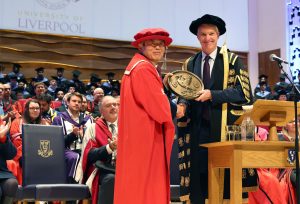30 Oct 2025
Xi’an Jiaotong-Liverpool University recently hosted its first Unmanned Robotics Boat Challenge (URBX), attracting 18 cross-disciplinary teams of students for a series of challenges on the Zhujing River at XJTLU Entrepreneur College (Taicang).
The competition saw a diverse collection of autonomous boats designed, built, and programmed by students navigate a specially designed course, testing their capabilities in speed, target recognition, and obstacle avoidance.
Open to all XJTLU students, the event provided hands-on engineering experience and required knowledge across multiple fields including mechanical engineering, electronics, computer science, machine learning, and artificial intelligence (AI), explains Dr Haochuan Jiang, Assistant Professor in the School of Robotics and coordinator of URBX 2025.
Try, fail, try again
One of the standout teams was Hitting the Jackpot, which finished third and received the Highest Recognition Accuracy Award. However, their bright-red boat almost didn’t make the race due to last-minute technical problems, with students working late into the night to find solutions.
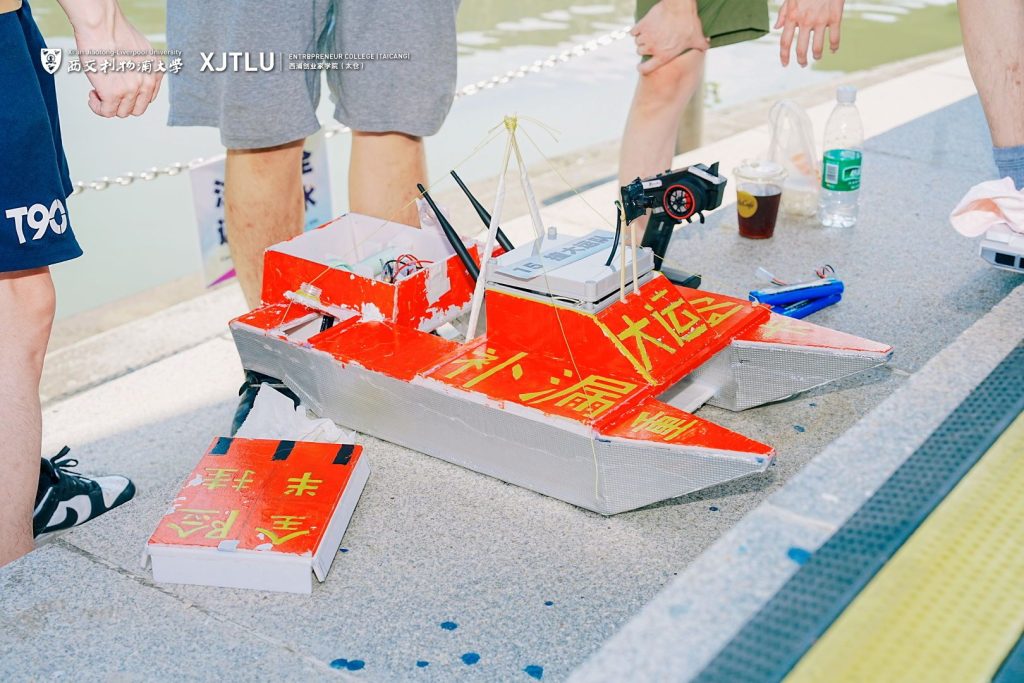
The boat built by Hitting the Jackpot
In the final hours, the team was able to devise a cooling system to stop an overheating issue, but an unstable power supply brought them to the brink of giving up.
“We initially felt that if the algorithm is good, the recognition will work fine,” but that wasn’t the case with an unstable battery, explains Xiaoyangke Jin, a Year Four student in the BEng Data Science and Big Data Technology with Contemporary Entrepreneurialism programme. “If we’d conducted tests earlier, we could have identified and addressed it sooner.”
With the race looming, the team tested four types of power adapters and ultimately resolved the issue just in time.
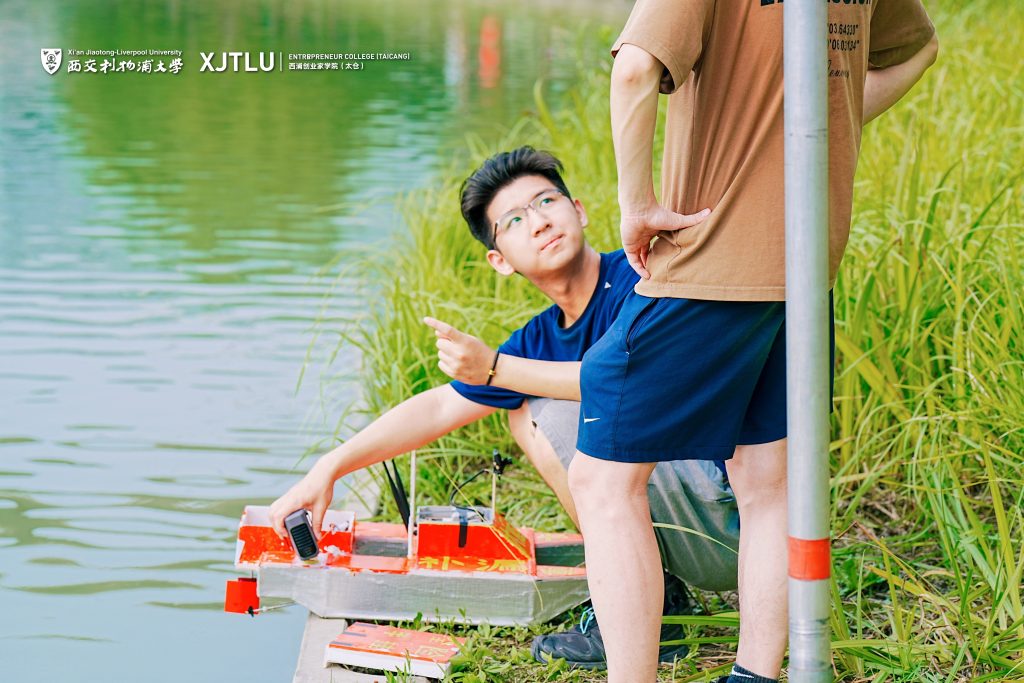
Hitting the Jackpot members test their boat
Jin’s teammate Enbei Qian, a Year Two student in the BEng Intelligent Robotics Engineering with Contemporary Entrepreneurialism programme, says refining and optimising the boat through hands-on testing and adjustments was the most valuable aspect of the competition.
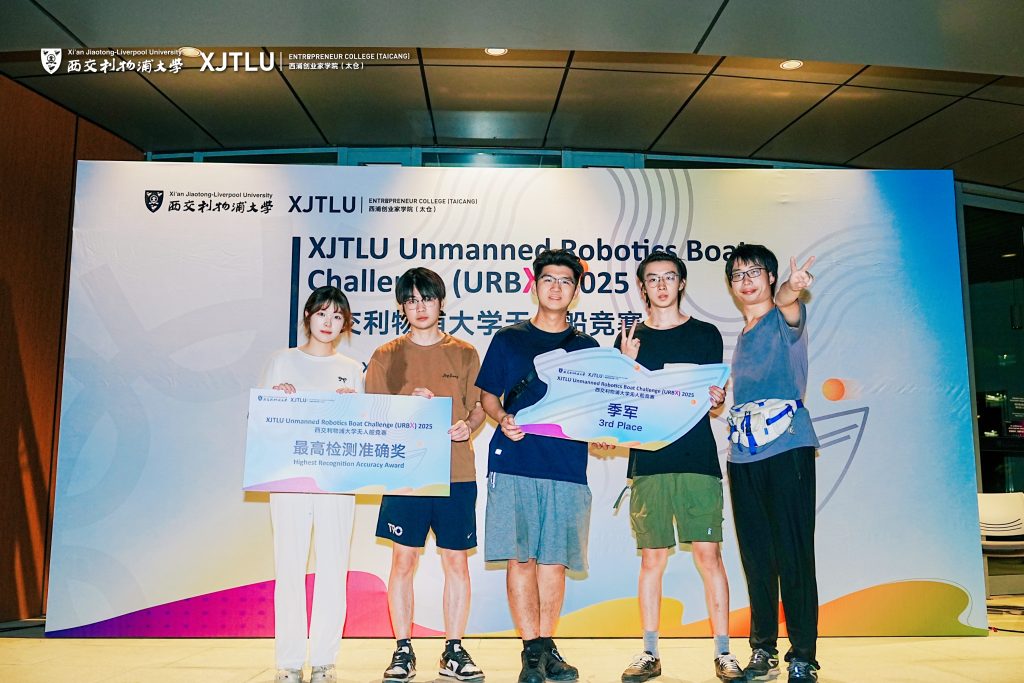
The students behind Hitting the Jackpot (From left to right: Xiyi Chen, Xiaoyangke Jin, Han Yan, Enbei Qian, and Runhao Wang)
“During the first water test, for example, we realised our original design could sink the moment it hit the water. It needed to be strong enough to withstand the waves,” Qian says, adding that the five-strong team had underestimated the complexity of designing the hardware. “If that had failed, we’d have had no choice but to start over.”
Crisis and opportunity
The champion of URBX 2025 and winner of the Highest Speed Award was Yep Yep Yep, led by Zihan Zhao, a Year Three student in the BEng Electrical Engineering programme and runner-up in the youth category at China’s 2019 National Model Airplane Championship.
Having no experience in AI data modelling, he enlisted a data science student to help create a deep learning environment and code framework, providing a foundation for his expertise. “This was a cross-disciplinary exploration for me,” Zhao says. “By taking on this challenge, I hoped to step out of my comfort zone.”
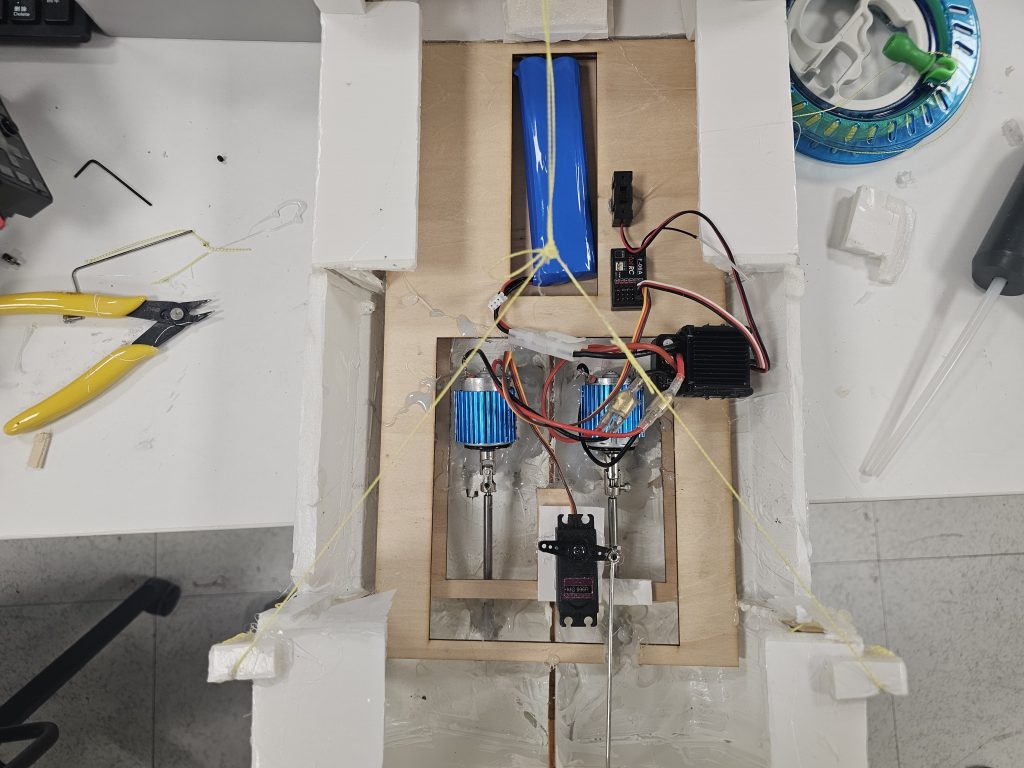
The power system inside one of Zhao’s prototypes
The team built two prototypes – one to validate the manufacturing process, and a second to test the parts assembly logic – before creating a final version that was still being optimised the night before the competition.
Throughout the process, team members tried out fresh ideas to find solutions and adjust the design. For example, to make the boat faster, they applied fluid mechanics to optimise positioning of the propeller and drive shaft, while the bow’s lift angle was increased to reduce contact with the water.
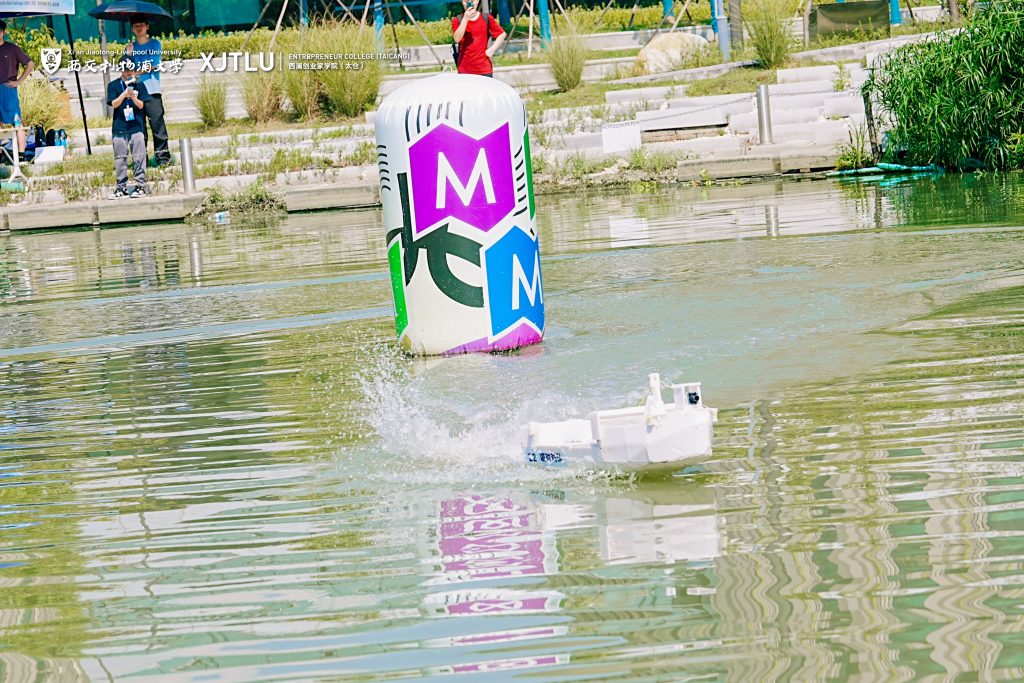
The boat built by Yep Yep Yep in action
After initial testing, Zhao found that the AI models trained directly on existing open-source datasets exhibited significant recognition errors and were barely usable. To address this, the team changed the model’s parameters and visited a nearby water sports club to collect footage for building a training dataset that closely simulated the competition environment.
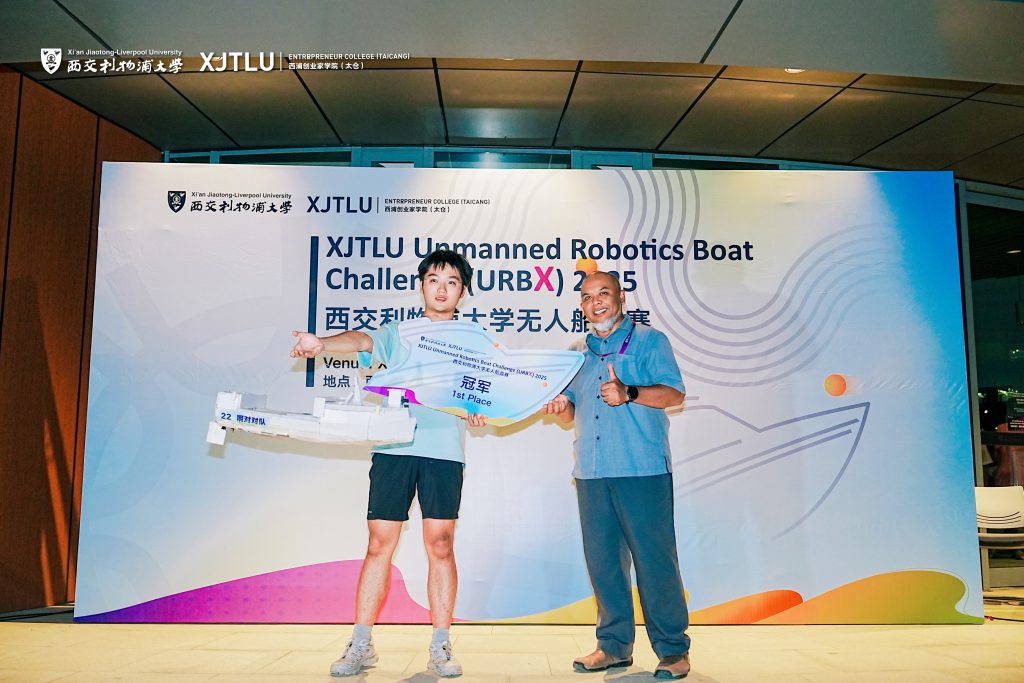
Zihan Zhao (left) with Professor Mohd Rizal Arshad, Dean of the XJLTU School of Robotics
Syntegrative thinking
In the run-up to URBX 2025, the University provided workshops and resources including machining equipment, 3D printers, and laser cutters.
Although many students were starting from scratch, Hitting the Jackpot’s Qian highlighted that the collaborative guidance from academic staff across the Innovation Factory, School of Robotics, School of AI and Advanced Computing, School of Intelligent Manufacturing Ecosystems, School of CHIPS, and School of Internet of Things enabled them to quickly acquire essential knowledge and skills.
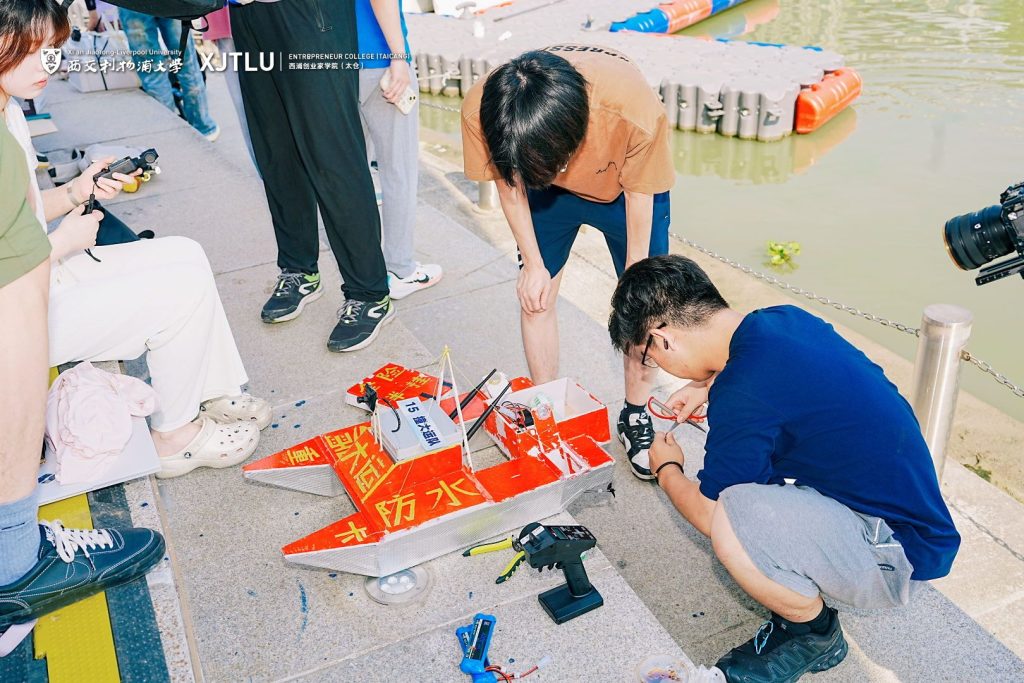
Members of Hitting the Jackpot repair their boat during the competition
“Through visible and tangible robot projects, students can directly engage with the realisation of technology,” says Dr Jiang. He adds that URBX 2025 is a “perfect example of the syntegrative education at XJTLU,” breaking down traditional boundaries and immersing students in complex, real-world engineering projects, requiring them to solve practical problems with interdisciplinary knowledge, teamwork, and innovative thinking.
By Jiayan Ji
Edited by Bo Kou and Patricia Pieterse
Translated by Xueqi Wang
Photos courtesy of Zihan Zhao and Xiaoyangke Jin
30 Oct 2025
